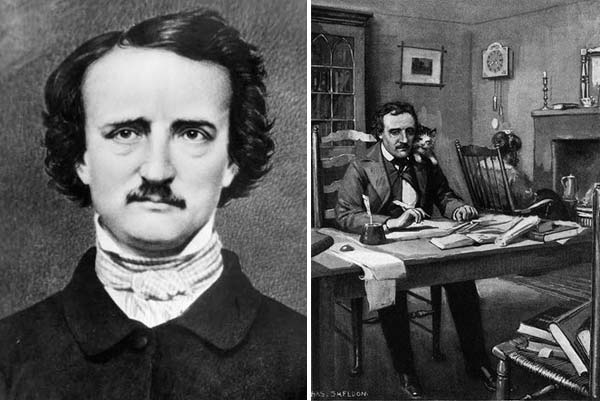Edgar Allan Poe’s turbulent life had a significant impact on his writings. Poe enjoyed writing poems for his loved ones as a child. However, as Edgar grew older, he faced difficulties and tragedies. His article Maelzel’s Chess Player, written in 1836 in an attempt to refute a hoax, is one of his most well-known works. What is this hoax, and how does it affect Poe’s creative career?
Edgar Allen Poe produced an essay early in his literary career revealing a false chess-playing automaton controlled by a concealed chess master. The article uses C. Auguste Dupin’s “ratiocination” method of deduction.
Who Invented the Turk
Wolfgang von Kempelen, an inventor and royal advisor to the Austria-Hungary empress Maria Theresa, vowed to build an automaton whose illusion would amaze spectators beyond belief. The empress was intrigued and allowed him to take a leave of absence to work on his project.
Kempelen came back six months later with a contraption that would be named The Turk. Its first performance was at the empress’ court in 1770 in from of the empress herself and a group of nobles.
Everyone at the court watched Kempelen wheel out a four-foot cabinet that was said to be an automaton chess player. He started the show by unlocking the cabinet and revealing the complex machinery within. After showing the audience the inner workings of his machine, he went on to pick out an opponent from the audience. He would then walk to the side of the device and wind the crank. The dummy on the machine would then move and make their first move. (Source: History)
What Did People Think About The Turk?
During its first exhibition, the Turk beat all its challengers, and it soon became the sensation of the court. The audience did not know how a mechanical device could win all the time. They speculated that magnets controlled the machine, and others believed that there was a child or dwarf inside the machine that carried out the moves.
The Turk was retired in 1774, but during the reign of Maria Theresa’s successor, Joseph II, it was revived. Under the emperor’s orders, Kempelen took the automaton on a tour of Europe with the first stop at Paris. The machine played against some of the world’s best chess masters and even beat Benjamin Franklin.
The tour continued for about two years, and the Turk traveled to England, Germany, and the Netherlands. At each place, it defeated almost all of its opponents and baffled everyone who tried to figure out the science behind the machine. (Source: History)
The Downfall of the Mechanical Chess Player
Most people assumed Maelzel’s chess player was a ruse, a simple automaton controlled by a human rather than a thinking machine.
The Turk inspired many writers.
Lincoln Michel, The Paris Review
Poe was one of them, releasing Maelzel’s Chess Player in 1836 to disprove the hoax. Poe said that if the Turk were a pure machine, it would always win. He gave seven reasons why the Turk had to be a hoax. A paradigm that is similar to Poe’s “ratiocination” approach of Auguste Dupin.
He concluded that a small man climbed inside the Turk’s body and operated it from within after much thought. Although the author correctly identified the hoax, he was incorrect about how it was perpetrated. The fact was that a person was sitting within the cabinet.
According to the museum, Maelzel and the Turk’s original owner tended to hire chess professionals to operate the machine, which explains why it won frequently. Poe went on to write the first detective fiction after witnessing the Turk. But he also perpetrated his own hoaxes, the most famous of which was the 1844 Balloon Hoax, in which he created a series of fabricated newspaper stories about a three-day trans-Atlantic balloon voyage. (Source: The Smithsonian Magazine)
Who Was Edgar Allan Poe?
Edgar Allan Poe is famous because of his vivid short stories and poetry that captivated people worldwide.
Modern detective fiction was born from his inventive storytelling and tales of mystery and horror. Poe’s works became literary classics, including The Tell-Tale Heart and The Fall of the House of Usher.
Some parts of Poe’s life, much as his writings, are shrouded in mystery, and the borders between reality and fiction have been increasingly muddled since his death. (Source: Biography)
